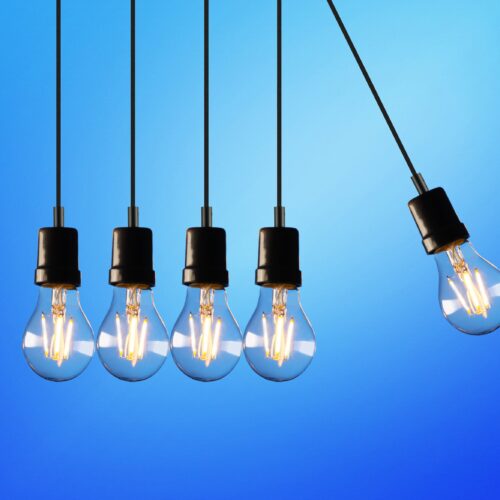
What is experimental writing? Part 1: Fiction
The definition of ‘experimental writing’ is highly subjective, but for me it includes writing that plays with form and pushes the possibilities of language further than usual. Some experimental writing can be difficult, asking for careful and active reading, such as Russell Hoban’s novel Riddley Walker (1980). Here’s the opening line:
On my namin day when I come 12 I gone front spear and kilt a wyld boar he parbly ben the las wyld pig on the Bundel Downs any how there hadnt ben none for a long time befor him nor I aint lookin to see none agen.
(Russell Hoban, Riddley Walker,1980: 1)
This sentence can’t be quickly scanned for its meaning. Instead, we have to slow down, thinking about what the meaning might be and why the writer might be using words in this way. This is challenging for a reader, and some will decide it’s not for them. There’s nothing wrong with that response, although Garry MacKenzie recently wrote a couple of blogs considering why persevering with difficult writing can be worth the effort.
Not all experimental writing is difficult though. Courttia Newland’s short story, ‘Reversible’ (available in Best British Short Stories 2017 ed. Nicholas Royle and published by Salt), experiments with the chronology of the story by telling it backwards. It begins by describing the body of a black man lying in a London street, and goes backwards through time, describing his moment of death, then showing him still alive and walking down the street, until finally he is back home, sitting down to eat with his mother. The undoing of this crime, the humanising of the dead body, the returning of life to this young man, is incredibly powerful, and in this way Newland’s experiment with narrative time is a crucial part of the reader’s emotional engagement with the story.
Ali Smith’s novel How to be both (Hamish Hamilton, 2014) also experiments with time. The novel is in two sections, one giving the point of view of George, a sixteen year old living in Cambridge in the twenty-first century, and one giving the point of view of Francesco, a painter in Renaissance Italy. You can read either section first and it was actually published in two different editions, one with George’s story first, the other with Francesco’s first. The two stories overlap and interact, informing each other and creating meaning through their interactions, but offering slightly different experiences to the reader depending which section they read first. The form perfectly reflects Smith’s interest in disrupting binaries and the novel’s thematic concerns with art as something mutable, its meanings shifting depending on your viewpoint.
Another recent novel which experiments with structure is Graeme Macrae Burnet’s His Bloody Project (Saraband, 2015) which describes a murder committed in the Scottish Highlands in 1869. It’s constructed from witness statements by key characters, a testimony written by the accused, medical reports and an account of the trial compiled from contemporary newspaper reports. The whole book is fiction, but Macrae has said that some readers have been convinced that these are genuine documents – surely a credit to his creative skills! The readers’ understanding of what happened on the fatal day shifts as they read the documents and decide for themselves where the moral culpability for the crime rests. In this novel, the form forces the reader to confront the difficulty of knowing the ‘truth’ and, like Smith’s novel, shows the difficulty of pinning down meaning or achieving an objective viewpoint.
These are just three different ways that recent fiction writers have experimented with structure and form, and I hope it’s clear that the writers aren’t experimenting simply for the sake of it: the experimental nature of these stories’ structures is a key part of the way the narrative is experienced by the reader and how the stories are understood and responded to.
In fact, it’s almost impossible to pin down what experimental fiction actually is, because it’s about disrupting norms in any way a writer chooses, but a good starting point is for a definition is in the introduction to Experimental Writing by Julie Armstrong (Bloomsbury, 2014) available online.
There are a couple of fairly new literary prizes that celebrate experimental writing, including the Goldsmiths Prize (founded 2013) which describes its remit as fiction that ‘opens up new possibilities for the novel form’ and the Republic of Consciousness Prize (founded 2017) which is ostensibly for fiction published by UK and Irish small presses, but which in effect celebrates experimental writing. Their long and short lists make a great starting place if you’re interested in reading more examples of experimental fiction.
In my next blog I’ll be continuing this theme, looking at experiment in poetry.
|
|







Experiment: Try using the bare bones of a story, leaving the reader to fill in:
“You ought to see a doctor.”
“2.30 pm , Thursday.”
“How can I help?”
(Leave out that her friend was sympathetic, that she made an appointment, that the doctor looked bored.)
A very interesting article and I must put these references on my reading list. I experimented many moons ago reading poetry backwards and recently came across a writer, Jenn Ashworth, who has compiled an interactive novel ‘Bus Station: Unbound’ online.